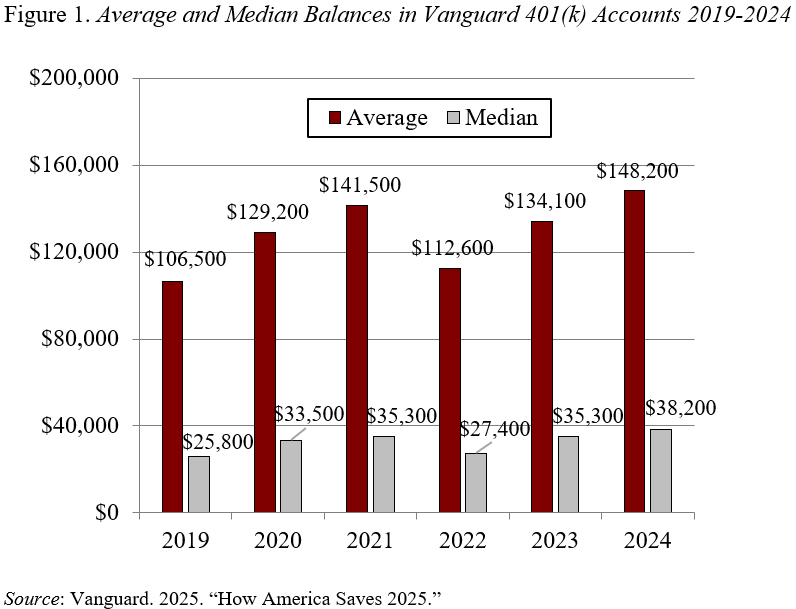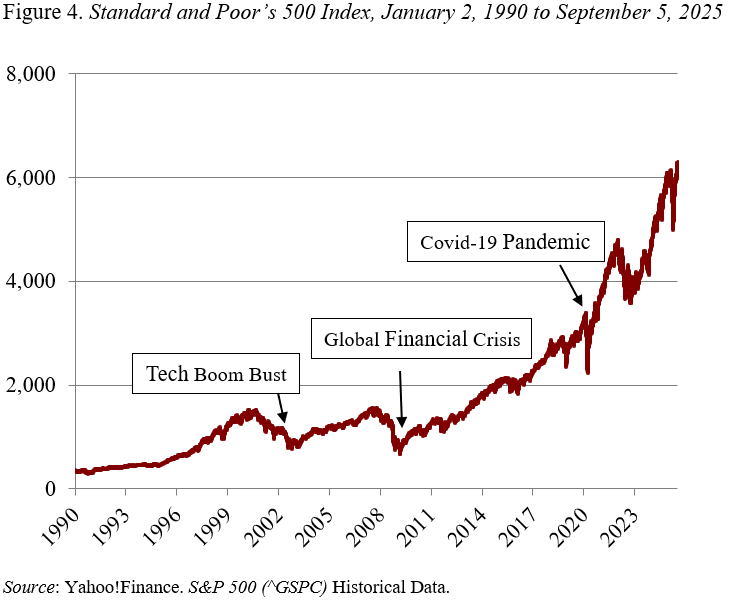Do participants understand their exposure to risk?
It’s always interesting to look at Vanguard’s most recent edition of “How America Saves,” which summarizes the previous year’s activity for its 401(k) clients. Of course, the activity at any single company does not provide a complete picture of retirement preparedness. Individuals may have more than one 401(k) account with more than one firm, and balances are often rolled over to an IRA, which financial services companies do not track. Moreover, by necessity, balances are provided on an individual, rather than a household, basis.
While a complete picture only emerges from household surveys, the Vanguard report always provides food for thought. This year, the thing that struck me was the percentage of 401(k) assets in equities – about 80 percent for those under 65. I hadn’t been paying attention to equity holdings, and that figure hit me as very high. But before looking at the equity issue, let me provide an update on 401(k) balances.
Since 2024 was the second good year in a row for both the economy and the stock market, it’s not surprising that participation rates, contribution rates, and median and average balances are close to all-time highs. Average balances rose to $148,200 in 2024 from $134,100 in 2023 and median balances to $38,200 from $35,300 in 2023 (see Figure 1). Average balances are more typical of long-tenured, more affluent participants, while the median represents the typical participant.

As noted above, the percentage of these balances invested in equities seems high. For those of working age, the percentage is in excess of 85 percent for those under 45 – declining to 64 percent just before retirement (see Figure 2).

In fact, equity holdings are currently the highest they have been since 2000, just before the bursting of the dotcom bubble and up from a low of 61 percent in 2008 during the financial crisis (see Figure 3). Much of the increase was purposeful with the introduction of target date funds, which increased age-appropriate equity allocations and reduced extreme allocations. Moreover, many households may be more diversified if one looked at all their investable assets – not just 401(k) holdings. That said, those with lower household income are less likely to have any other financial investments.

Despite the intellectual case for target date funds, it’s hard not to worry at this time. Stocks are risky. Yes, they are the highest yielding publicly traded asset, but the volatility in their returns – as measured by the standard deviation – is also substantial (see Table 1).

And it’s not true that risk declines over time. Even if short-run returns converge to expected values over time, the volatility widens the range of possible wealth outcomes. Moreover, participants who are on the verge of retirement face sequence-of-return risk as they start to withdraw their assets. That is, lower returns in the early years of retirement– with a constant withdrawal rate – would result in lower lifetime income. Finally, look where the Standard and Poor’s 500 Index is (see Figure 4).

Clearly equities have been a good investment for the last three decades and target date funds have improved investment patterns. But it has taken a lot of work to get people comfortable in saving for their own retirement. Do they know how exposed they are to the stock market? Would they be happy if they knew?






